Anita Doron’s first feature film, The Lesser Blessed, is a love story that takes place in a remote community in the Northwest Territories. This moving film is being released theatrically in Canada today, and will arrive in the U.S. on June 13th. As it opens, we asked Doron to tell us about the film, her path from poet to filmmaker, and about her absurdist life as a nomad and mother.
What is The Lesser Blessed about?
It’s about a 16-year-old Tlicho kid — Tlicho is a First Nation in the north of Canada — and it’s based on the novel of the same name by Richard Van Camp. Larry Sole, the hero of the story, has to face down the devil right in the eyeball before he can set free his romantic heart. It is also a teenage love triangle. I cast a first-time actor from the Northwest Territories after spotting him in the school hallway. We had a very intense shoot with fires and wolves, Benjamin Bratt, knockouts, first-time kisses and all sorts of insanities. We barely survived, but it was glorious.
You started as a filmmaker from a very young age.
Yes. I made a film — or I tried to make a film — when I was 12 in Eastern Europe. And I got in trouble. There was this river in our city, and people lamented: “Oh, we used to swim in this river at one time. Look at it now, a sewer.” My friend’s dad had a Super 8 camera, and we started sneaking around trying to film factories dumping into the river and interviewing people about the river. Only drunks would speak to us on camera. But yeah, we got called into the deputy mayor’s office and told to stop filming. We were two 12-year-old girls with a little Super 8 camera, and it was hilarious. But we frightened them. There was no turning back after that, because I saw how powerful filmmaking can be.
Actually, as a kid, my first creative expression was through poetry. When I was five, we went to the Black Sea and I was mesmerized by these glowing underwater bugs at night. I wrote a poem, and I saw my mother touched by it — and she is a woman who is very careful about showing excitement. So it meant a lot to me. I kept writing, I couldn’t help myself. I was in a young poets group, and the poem was published in the regional paper. Once I wrote a poem about passers-by and the paper got a lot of mail with people complaining that a kid could not have written this poem, they must have cheated. I remember being very confused by the allegations — there was nothing complex in that poem, just an observation of faces on the street. Hungarian is a great language to write poetry in, you can really lay and twist words and concepts around, get elliptical and flavorful. When I discovered filmmaking, it was a natural transition. I don’t write poetry anymore but, to me, filmmaking is poetry.
How did you find the story for The Lesser Blessed?
I was at the Banff Centre for a filmmaking workshop and became very good friends with an artist named Shelley Niro, and she gave me this book. She knew Richard, and she loved the novel. I fell in love with it too, of course. I wrote the script and got lucky enough to find Christina Piovesan, a producer who had just finished studies at UCLA, and was looking for exciting new projects. (Since then she has made Amreeka and The Whistleblower.) This wasn’t an easy project to fund and get going because it was, without getting too political, a struggle. People would question, “Why are you making a story about a First Nations kid?” And I would say, “Why wouldn’t I?” I love the story, I understand the world and I think it’s one of the most original characters in Canadian literature I’ve come across. He happens to be Native. I identify with him because of who he is.
Where did you film it?
We filmed it in Northern Ontario. It was a logistical impossibility to actually film it in the Northwest Territories because there is no proper infrastructure for filmmaking, and it would have doubled our budget to fly everything up there. It takes place in the winter, so shooting outside in minus 40 would have been torture as well. The desolate, cold, northern landscape was quite close in feel where we filmed. We searched for a long time, too. I didn’t want to compromise and make it look like the north; I wanted it to feel very remote and northern.
The authenticity was brought by the lead character, played by Joel Evans, who is a first-time actor from the very town Richard is from. We did a 550 km casting road trip across the Northwest Territories from high school to high school of different communities because I really wanted to cast from the north. I’d been in the Northwest Territories when I was writing the script, and I met a lot of kids who could be right for the part.
I actually did this through the encouragement of my partner, TED Fellow J. Adam Huggins, who had gone out around the world to cast subjects for his documentary photo essays and believed we would be successful. We took our baby boy along with us, and it was quite the circus show. But we succeeded! On the very last day, as we were leaving and I was considering some kids for call-back, I saw this kid in the hallway cracking jokes and looking exactly the way I had envisioned this character in my head for six years. He didn’t bother coming to the audition because he had a math test and better things to do. But once we pushed his math test and I gave him the script, he nailed it. He’s amazing. He’s a really talented, wonderful guy.
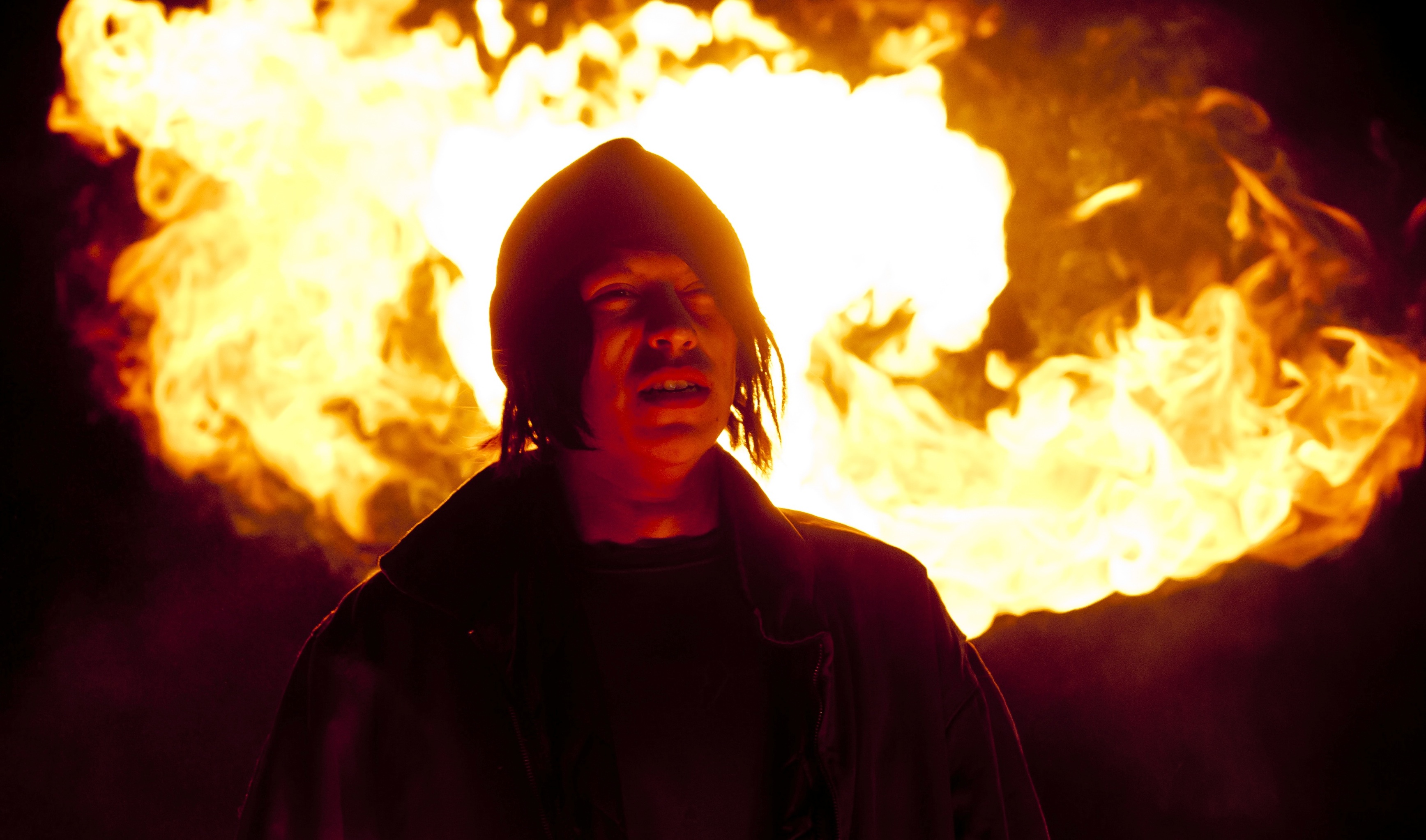
Above: directing on location. Below: Joel Evans on set during a tricky shot with FX and stunts. Photos: Brooke Palmer
How does Joel feel about acting now that the film is completed? Has he decided to be an actor?
Well, he has to finish high school, but he’s very interested in acting; he really got the bug. And he’s talented — he’s got that natural charisma and emotional intelligence great actors have. He worked with an amazing cast that inspired him: Benjamin Bratt and Kiowa Gordon, who was one of the wolves in Twilight, and Chloe Rose — she was on Degrassi. Tamara Podemski, who won an acting award at Sundance. A brilliant cast — I was lucky to have them. Joel was inspired by them, and they were inspired by him because he’s from the place where the novel is set.
This is isn’t your first feature, is it?
It’s my first proper feature film. I’ve done a couple guerilla features on no budgets. It was me playing around, experimenting, on tiny Arts Council funding. One in Hungary, where I worked with my cousin Eva Gabor. (Yes, she has a sister named Zsuzsa Gabor, but they are wildly different from the infamous Gabor sisters.) I cast her as a fictional character but the setting was documentary — the murder of a Romany man and his son by Hungary’s militant extreme right wing. Then I went to Mexico and shot a magical realism comedy on the beach, barefoot, with an international Bohemian cast. But The Lesser Blessed had a budget and a crew. So technically, it could be considered my first feature film.
With such a contrast, how did you figure it out? Did you just learn as you went?
I’d worked with big crews on music videos and on short films and I was comfortable with that. When you know what you want, and you understand how to get it — a tiny crew or 60 people makes no difference — you get to the film you want to make. Every project brings its own chaos and challenges. So what you’re used to is knowing that there will be chaos and insanity and challenges, and knowing that you have to be unwavering with your vision but still flexible and able to think in the moment, and never show any weakness or doubt. However much you’re freaking out inside and wondering if this is the right decision or what’s going to happen, you cannot show it.
And I love actors. I live for creating with actors. It’s really a little bubble we live in for the duration of the production. We create. They bring their ideas of the character, and then they inhabit this character. And then I help them connect with emotions or liberate them from overthinking, allow them to experience the story and be lost in the moment. It’s like collective painting. I engage their senses and make sure they disconnect from the machinery of filmmaking. Then they forget that there are cameras and assistants and booms hanging above their heads. Of course it can be comical when you’re directing a love scene, for example, and sometimes you have to get very precise and technical while still letting the moment be authentic, with a tense crew sitting just outside the closed set, wondering what the hell is going on, and the cinematographer sweating with a 60-pound camera on his shoulders, because the director wants movement and flexibility.
I love the process of directing and filmmaking, love that you can take a story and words, and then suddenly there are people who bring it to life, whether it’s through their own skin and blood as actors or the cinematographers through their ways of photographing. The costume designer creates complex and rich ideas of wardrobe with character histories. Everybody brings so much creativity and passion. You just have to inspire them to get to the same point that you’re trying to make. Everybody’s just blooming with ideas and creativity, you just make sure all the lines meet at the vanishing point.
What are some of your favorite movies and filmmakers?
I really love Tsai Ming-Liang. He’s one of my favorite filmmakers of the Second New Wave film directors of Taiwanese Cinema. And there’s also Roy Andersson, a true absurdist from Sweden. Andrea Arnold from the UK, who directed the heart-punching Fish Tank… They’re all getting to the hard core of human nature and human joy and suffering. And some come at it from a very elegant minimalist approach, others from the brute comedy of life or from raw neo-neo realism. I also love Tony Gatlif. Tony Gatlif and Emir Kusturica are more of the effusive, embracing life types — celebratory, over the top. And Mira Nair, who did Monsoon Wedding. All these filmmakers are very honest and very emotional and very visual. These are the people who inspire me.
On another note—I’m curious, did you meet your husband through the TED Fellows program?
Adam — who is an amazing visual storyteller and the most incredibly multitalented person I have ever me — was living in India. He was coming to Toronto, which is actually his home town. Simone Alexander from the Fellows team and Fellow Gavin Sheppard recommended that we meet because our work is quite similar and they thought we would hit it off professionally. Well, we hit it off — very unprofessionally. It was instant and powerful. It was one of those where you just drown in this love story and your life changes completely and you surrender to each other.
It was obvious that we would want to be together for life and start a family. We were so aligned in our adventures — in our absurd approach to living, in questioning conventions and in not wanting to settle down — even though everybody told us, “You’ll probably have to get serious and settle down.” We don’t believe in security that way. We take our foolishness very seriously and we don’t believe in the easy way out. Nor do we believe happiness is an end.So we set out together.
In fact, Adam, when he wanted to express to me that he wanted to be with me for life, said, “I want to go with you,” which is exactly what we’re doing. We’re just going together. We’ve been traveling for two years, going from India to the Middle East and Brazil, and now we’re spending a year on this little island in Canada, housesitting a farmhouse with chickens, a garden and two cats. We keep going and growing together, now with our two-year-old son, Tian, who was conceived in India and born in Brazil.
I think it’s important to have our children with us and not to segregate childhood. Childhood is about soaking up love and experiences, not about preparing for a flawed education system. It’s one of the things that I’d like to focus on in my life — to question this quarantine of childhood that happens in the West. In Brazil for example, in Belo Horizonte, it was so great to be surrounded by different generations mixed together all the time. Anywhere we went with the baby, we always felt natural. It is important to embrace the chaos of growing up and not try to impose rigid lives on our kids. It’s not natural.
So you actually made The Lesser Blessed with a small baby!
Yeah, he was five months old at the start of production. But I could do it all because of Adam, who was on set with Tian. I would breastfeed him at lunch breaks; I would have crew meetings with Tian on my boob. Everybody was very understanding. And in fact — this is actually quite beautiful — Christina was pregnant with her second child. So the film was led by two mammas.
Can you explain what “an absurd approach to living” means to you?
We’ve been, in a way, homeless for two years — roaming around the world finding opportunities. We don’t believe that life is secure or that you can create safety, and we think that we would limit ourselves and our son if we just settled down. Of course, this approach often brings moments where you don’t know what’s going to happen next. There are moments where we are traveling with our hobo bags and our stroller and we’re getting on and off trains, airplanes and cars, and I can hear the clown music in the back of my head as we are running around. And then you have to get creative and find solutions and sometimes scramble. But the upside is that sense of freedom. Our eyes are wide, we are learning together, continually figuring out that thing called living. We laugh through the stress of it. We feel like we can go anywhere in the world and feel at home — we don’t need a house or a job or anything concrete to belong. We belong because we make connections with people and with the myth of a place. I think we are aware that if it ever feels like this child needs safety and stability, we would stop moving. But he’s the most happy and joyful little guy I’ve ever met. Anybody who comes into his life, he just extends his hand and wants to shake theirs.
What’s next?
One of my next projects is based on a book about a 19-year-old girl who gets a job on a commercial ship, a laker, for a summer and it changes her life. Another is about two teenage girls on the run from the Taliban in the very oppressive world of Afghanistan, relying on each other to survive. I’m writing a science fiction novel called New Tripoli. And Adam, Tian and I are also organizing our next TEDxBeloHorizonte conference in Brazil, which we founded with a dream team. One of our co-organizers is Zoë Melo, a genius designer who blows my mind. Another one is Natalia Menhem, who is now the TEDx ambassador to Brazil. This is our second year. The theme is “Living with Uncertainty.” We’re very excited about it.
So the TED Fellows program has given you quite a big package.
It really changed my life. I got a family and a new perspective on life. Before TED I was very film-focused. I was in a bubble. After TED, and after meeting Adam, I feel like there are so many other ways to affect the world and to tell stories outside of filmmaking. I’m excited about the creativity and reform that can be brought into education, for example. So many doors opened for me, but I think the biggest thing was the doors that opened inside me. They’ve blown open. I’m excited to engage. And I’ve become more innocent because of TED and more believing in an individual’s ability to effect change.
Above: view Anita Doron’s first short film
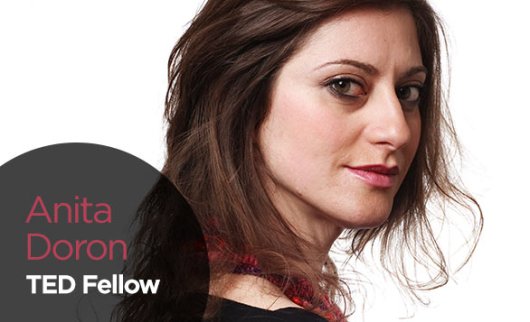
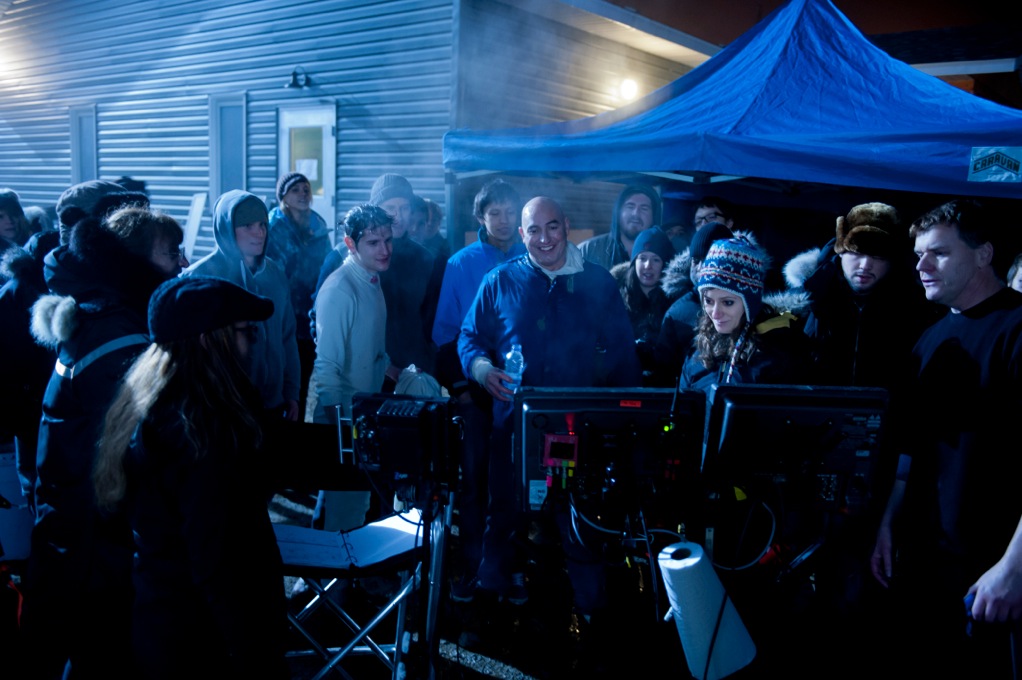
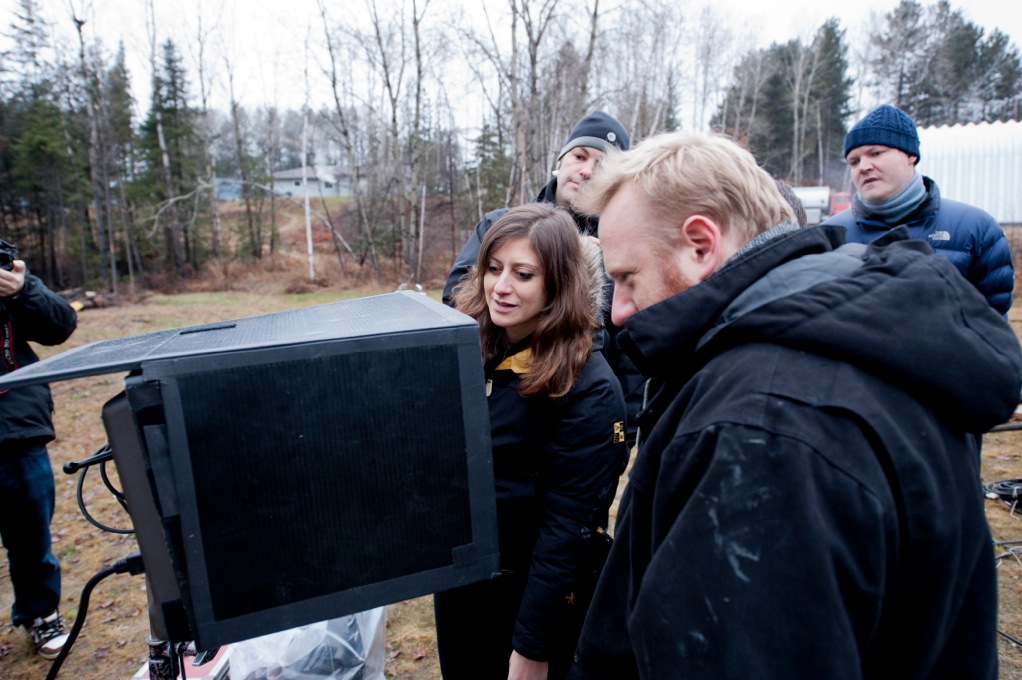
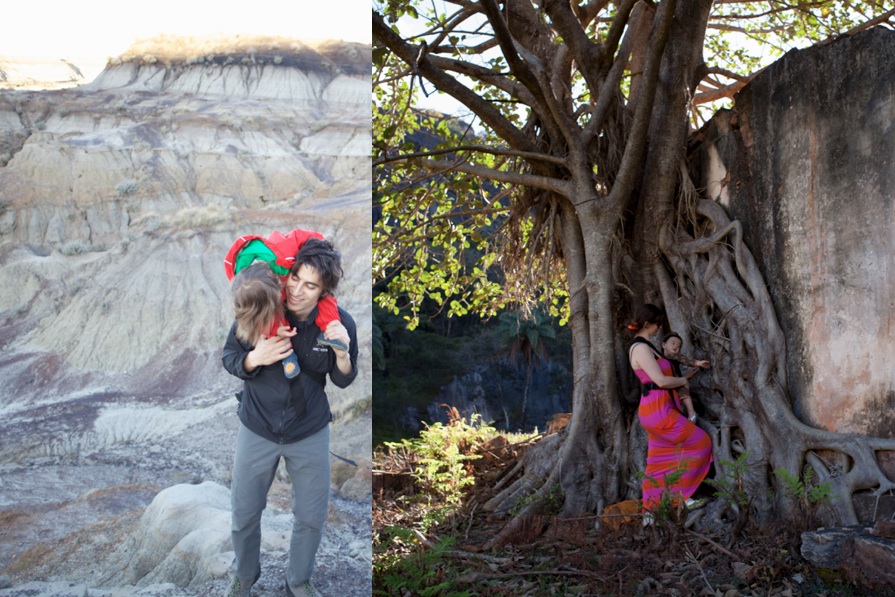
Comments (8)
Pingback: Az Oscar-gálán lesz még egy magyar: Doron Anita, aki Angelina Jolie-nak írt forgatókönyvet | hamishirek.hu
Pingback: Az Oscar-gálán lesz még egy magyar: Doron Anita, aki Angelina Jolie-nak írt forgatókönyvet - StartHírek.hu
Pingback: Az Oscar-gálán lesz még egy magyar: Doron Anita, aki Angelina Jolie-nak írt forgatókönyvet - Hamar jó lesz...
Pingback: A “living fossil” spotted in the South Pacific, a machine that vomits + poetry that rethinks assumptions about inmates | BizBox B2B Social Site
Pingback: A “living fossil” spotted in the South Pacific, a machine that vomits + poetry that rethinks assumptions about inmates | Lifespace connect
Pingback: Facing Down the Devil in ‘The Lesser Blessed’ | Bitch Flicks